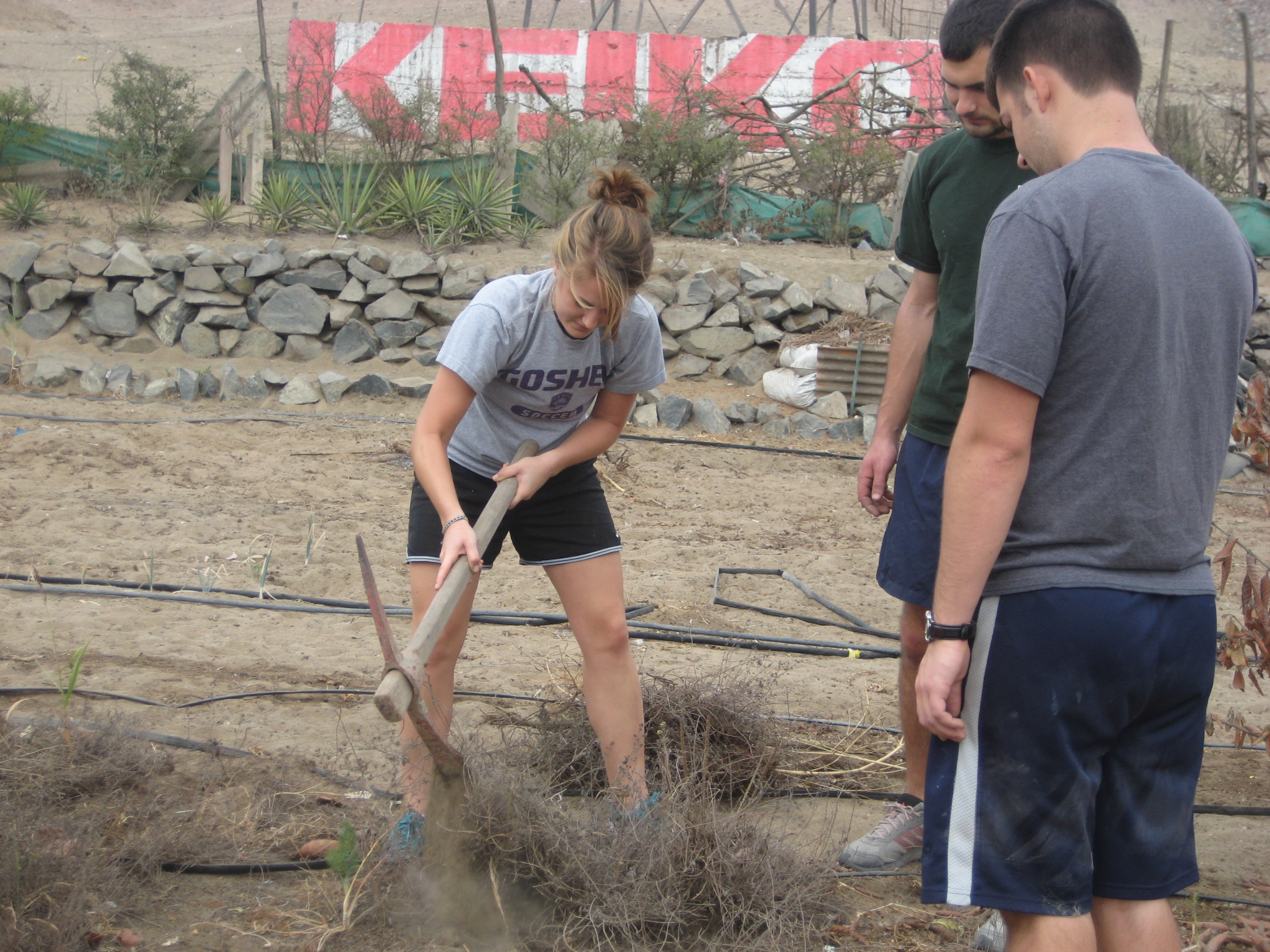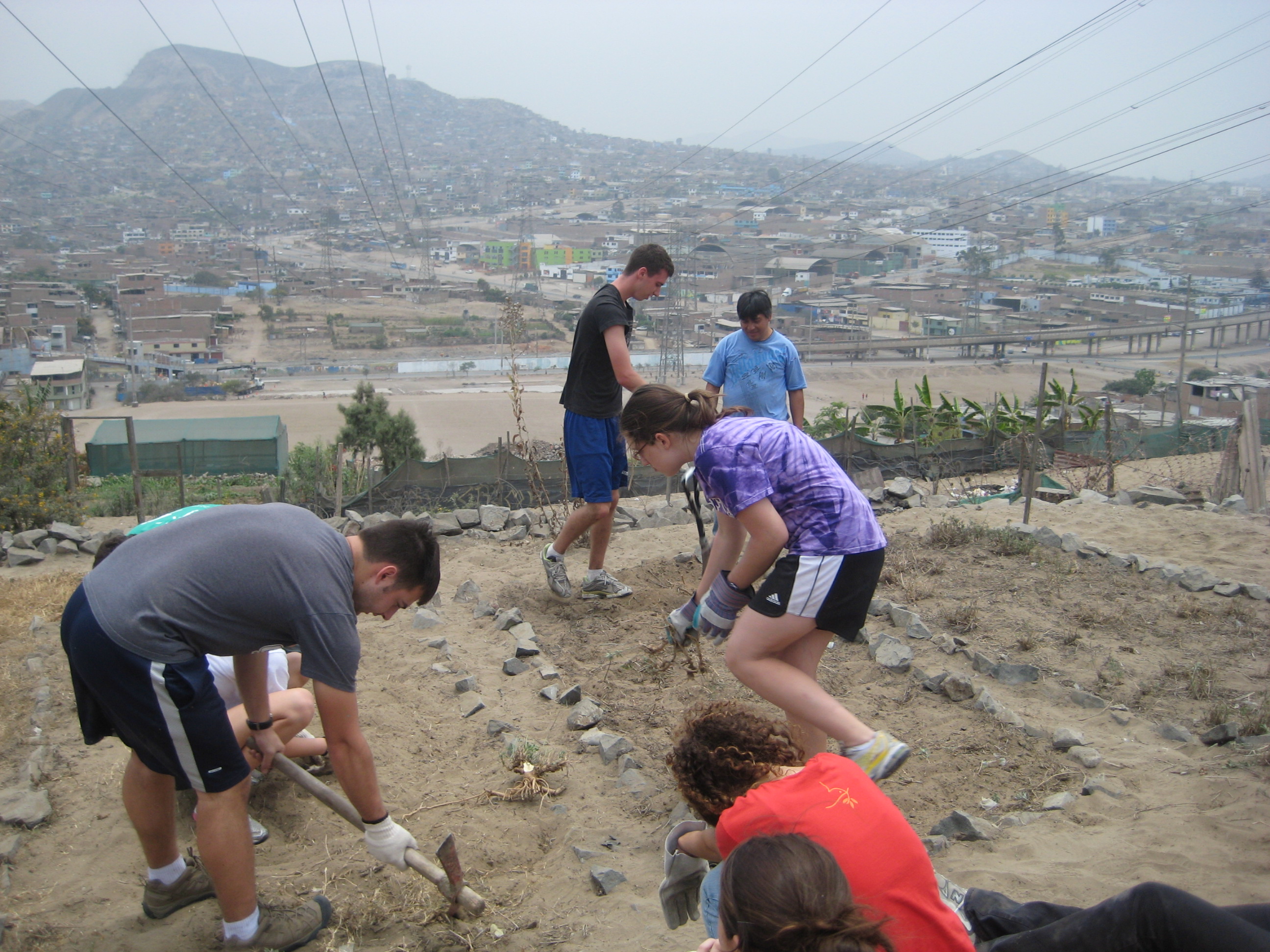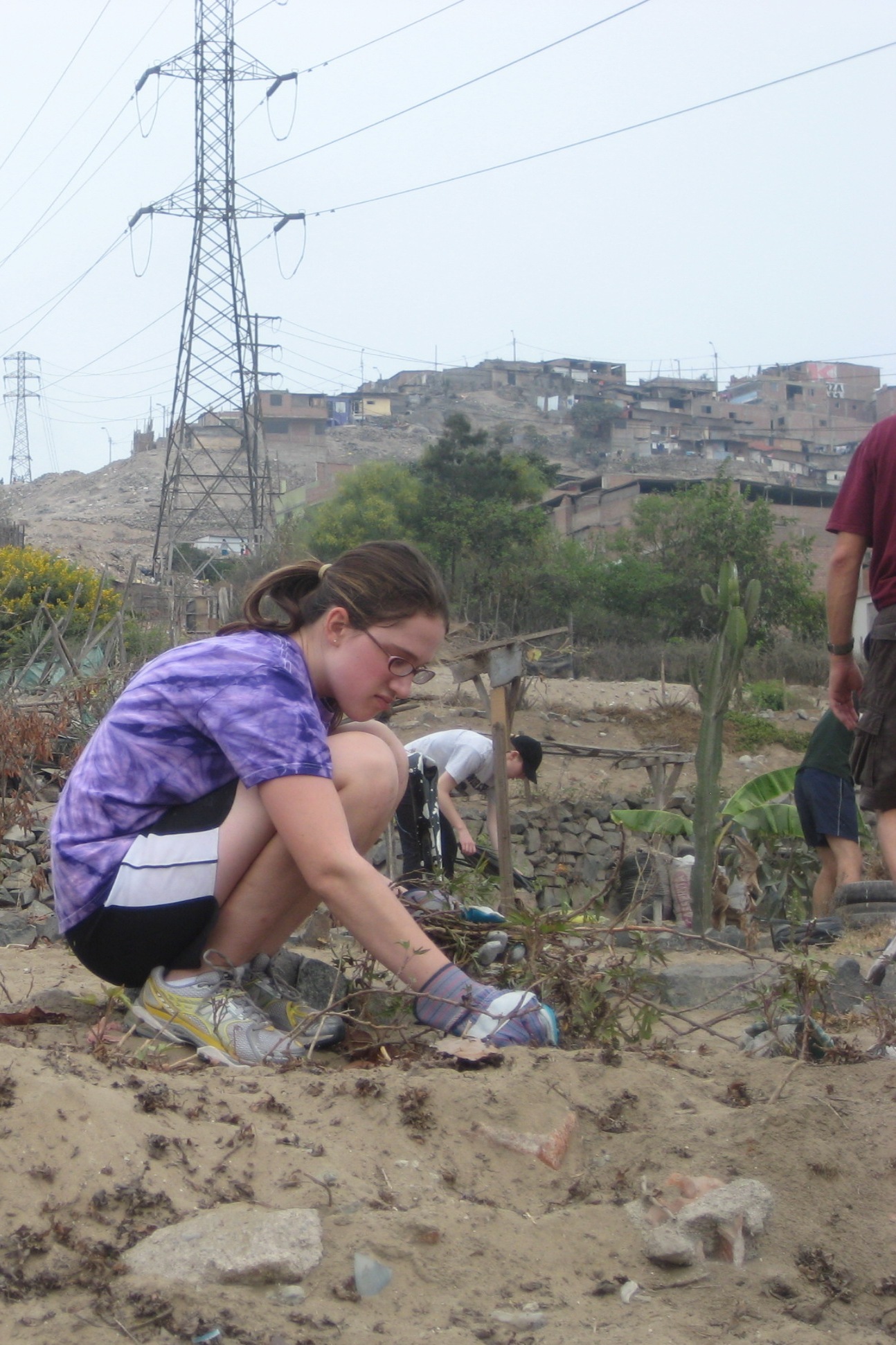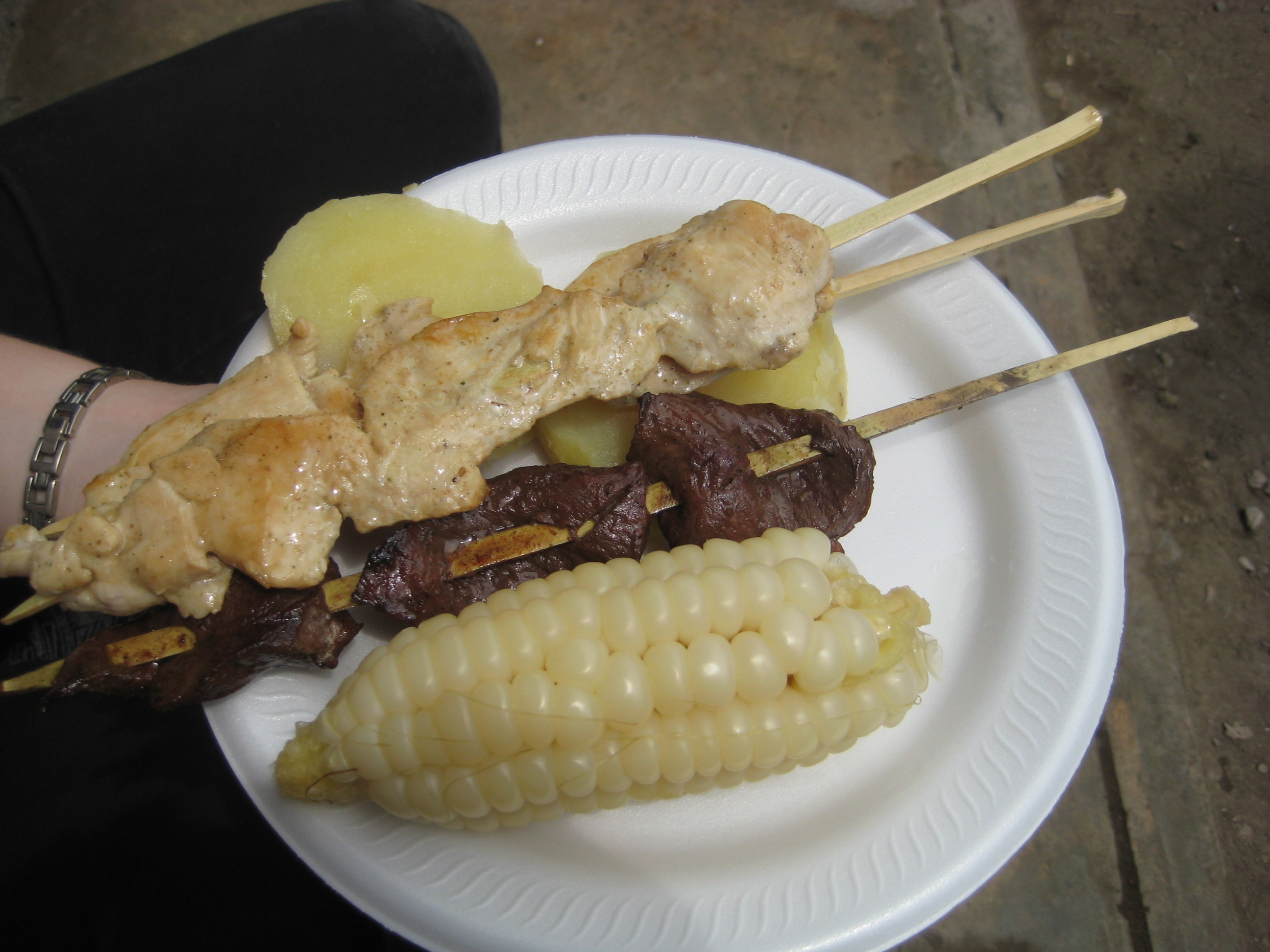gardens, barbeque, and traditional medicine
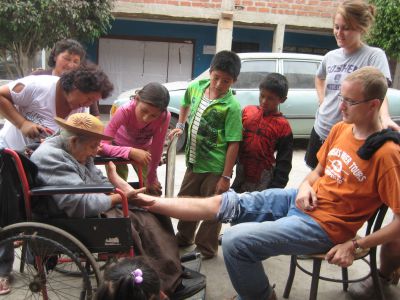
We spent our second day in the Cono Sur visiting a biohuerto (community garden), where the SSTers helped clear a few plots and marveled at the resident gardeners’ ability to cultivate 18 types of fruits and vegetables in soil that–in its natural state–is little more than sand. The gardens are a joint venture between local residents, an NGO, the city government, and the electric company, which donated the land under electrical towers for the project. The biohuertos of Villa Maria do double duty by increasing food security for local residents, especially families with young children and the elderly, as well as providing nutritional education. (For many Villa Maria residents whose families hail from the Andes, produce like lettuce, tomatoes, and broccoli are unusual and rarely used. Far more popular are the starchy, familiar potatoes, rice, and corn. The garden’s organizers teach residents not just how to grow these different kinds of produce–they also explain why they are nutritionally valuable and how to prepare them.)
We concluded our visit with a tasty lunch of anticuchos prepared by our host, Alicia, and several of her family members. A traditional dish of skewered meat that’s marinated and grilled, we tried the most popular type, anticuchos de corazon (beef heart) as well as (and possibly more popular among our group) anticuchos de pollo (chicken).
For one SSTer, a game of volleyball the night before resulted in a twisted ankle, which resulted in sitting out much of the biohuerto visit. When Alicia’s mother, a traditional healer, heard what happened, the octogenarian señora offered to treat Zach’s ankle. She used an herbal ointment and massage, and after she carefully wrapped it, he declared it was much, much better.


